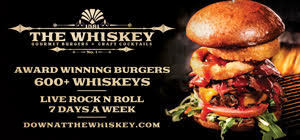Stuffing Versus Dressing
The operators at the Butterball Turkey Talk-Line have a lot of answers for even the most obscure questions. But no one there seems to know what the difference is, if any, between stuffing and dressing. Folks use it interchangeably, sometimes in the same sentence. As near as anyone can tell, it’s called dressing until it’s put inside the bird. It’s a mighty good-tasting part of the dinner (some people think the turkey is only there to hold the stuffing), but it’s one of the most dangerous parts of the meal.
A lot of people get in trouble with the stuffing because the bread it is made with, once moistened, is highly vulnerable to bacteria. “Bread stuffing is a dream come true for bacteria,” reports Schnelle. A lot of people, she says, try to save time by stuffing the bird the night before — which gives the bacteria the chance to multiply. Refrigerating the stuffed, raw turkey overnight won’t help because the bird will act as an insulator from the cold for several hours, long enough for the germs to grow. Eating infected stuffing can cause severe food poisoning, even after it’s cooked.
Some folks mix up the dressing the night before, ready to stuff the turkey the next day. Also not a good idea, says Schnelle. If you’re intent on saving time, she advises, mix the wet and dry ingredients separately and refrigerate overnight.
An alternative to stuffing the bird is to bake the dressing separately in a greased, covered casserole during the final hour the turkey is roasting. This saves time in preparing the turkey and in cooking it — an unstuffed bird takes less time to cook than a stuffed one. Besides avoiding the bacterial risks mentioned above, cooking the stuffing outside the bird is healthier from another standpoint: it isn’t soaking up all that turkey grease during the roasting time.
Prestuffed turkeys do not present a bacterial hazard as long as they have not been thawed. Schnelle explained that prestuffed turkeys are done so under sterile conditions and then flash-frozen, a process that cannot be duplicated at home.
You can stuff both the neck and body cavities, but do pack the dressing in loosely because it will expand as it cooks. Then turn the wings back to hold the neck skin in place and return legs to tucked position.










